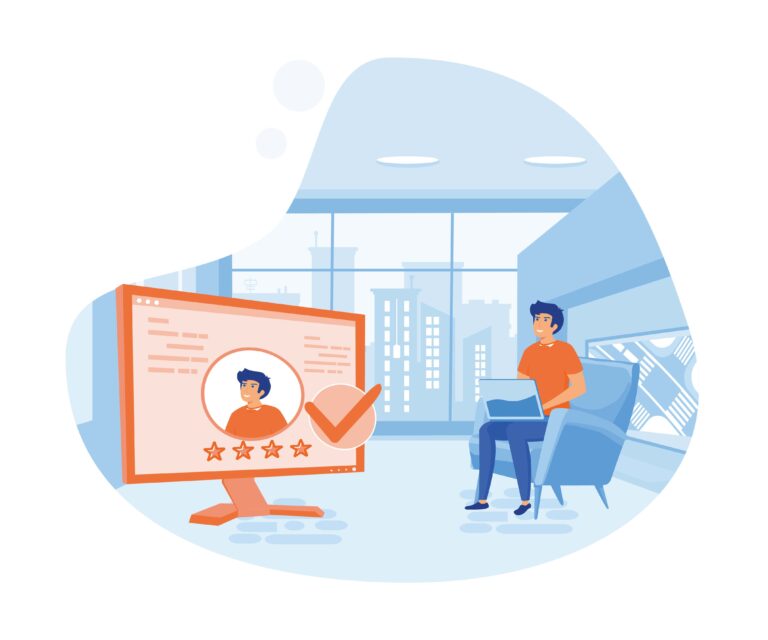As a therapist you went to college for a 100 years to learn how to guide people through the path to recovery from problems in their lives.
As you went through school, the assumption was that you would be working for a company who would already have clients waiting for you. All you needed to do was prepare to help them.
The one thing that you were never prepared for was how to get clients when they inevitably weren’t waiting for you. Marketing for therapists never crossed your mind.
Don’t worry. By the end of this article, you’ll have a firm grasp of the science and art of marketing.
There are only two essential elements to your therapy private practice.
Number 1: Have a product or service that’s deeply needed (your therapy).
Number 2: Be able to get your product or service to the people who need it.
This second element, in essence, is marketing.
If you want to master marketing for therapists so you can get back to helping people then you’re in the right place.
-Strategy 1: Find your Target Audience
-Strategy 2: Keyword Research
-Strategy 3: Determine Your Marketing Strategy Priorities
-Strategy 4: Have a Goal-Oriented Website
-Strategy 5: Social Media Marketing
-Strategy 6: Networking
Many therapists operate under the assumption “if you build it they will come.” Nothing could be further from the truth.
This approach might have worked decades ago if you were the only therapist in town. The reality now is that when you go into business for yourself, there are most likely dozens of other therapists competing to reach the same audience you are.
“Marketing in today’s age is the ability to effectively bring your product or service to the market (to your target audience).”
Let’s start with a couple misconceptions therapists might have about marketing.
Why Therapists Struggle with Marketing
We work with therapists all the time and have consistently seen two main reasons therapists struggle with marketing
Number One: Therapists often have false core beliefs about marketing
Many therapists find that advertising and marketing is distasteful since the work they do is not as much about the profit as it is about helping people better their lives.
In reality, the more effectively you advertise and market your services, the more people you are able to reach.
“Great marketing makes it easier for the people who need you to find you”
Number Two: Many therapists have overlooked the usefulness of business and marketing skills.
Therapists often view marketing as a necessary inconvenience, rather than a valuable tool.
Successful marketing strategies have been discovered in much the same way effective therapies have: through observation, pattern-finding, and evidence based research.
There are effective marketing strategies out there that will improve the way you reach new clients. Let’s take a look at a few high level strategies.
Are you looking for a therapist marketing agency? Learn more about the services we offer by scheduling your free consultation here!
Find Out How We Can Help Grow Your Business
Let’s discuss your marketing needs, and we’ll help you put together a digital marketing strategy that will generate more leads and save you time.
Strategy 1: Find Your Target Audience
Professional marketers know that if you’re trying to talk to everyone, you effectively communicate with no one.
This means you have to speak specifically to the people who need your message.
In order to do this, you have to know who your Target Audience is.
You can create your own target audience profile complete with an appropriate name.
Imagine doing this as though you were creating a case study of your average run of the mill client. This is called your Target Audience Profile.
For example, Susan is a 22-year-old mid-western female who is presenting with problems of anxiety and depression regarding the stresses of young adulthood and life after college. She has accepted a job in a new town and is having trouble forming new relationships (pain point/felt need).
When you speak to the needs, desires, and pain points of that specific person, your target audience will deeply resonate with your message.
This is much more effective than trying to talk to everyone.
Strategy 2: Keyword Research
When you’re writing your marketing material, you should speak to the ‘one person’ that is in your target audience profile.
In order to find your target audience, you must first take inventory of the services you can offer. This might be cognitive behavioral therapy, help for anxiety and depression, etc.
You can begin your research by finding out which of those topics have the highest unmet need in your area of business. Below are a couple steps to do this.
Step 1: Great marketers start their research by putting themselves in the shoes of their clients.
Think about how your clients would find the services you offer. Try getting on Google and searching for “anxiety therapists near me.”
Then begin looking around at your competition. Take note of the types of search notes you put into Google that helps you find your competition.
Step 2: Keyword research is the next phase of finding your target audience.
By identifying the keywords your target audience is searching to find you, you will discover how to appear in front of them during your search.
A great tool that we use every day is Google Keyword Planner (Free Tool).
The keyword planner allows you to select specific geographic areas around your business and then find what search terms people are using to find services like yours.
What you can expect to find from keyword planner is the key word itself:
- Search Volume: How many searches there are a month in the geographic region you selected
- Cost per click (CPC): How much you will spend when someone clicks on your ad. THe cost per click rises the high in demand your keyword is.
- Keyword Difficulty (KD): How difficult it is to rank organically for a given keyword. The higher the difficulty (between 1 to 100) the more blog posts you will be competing against (This is specifically for content).
If you’re looking for more of an advanced tool, we have found that SEM Rush keyword magic tool to be preferable (Paid service)
Are you looking for a therapist marketing agency? Learn more about the services we offer by scheduling your free consultation here!
Strategy 3: Determine Your Marketing Strategy Priorities
As you’re beginning, there are three main options to consider when creating your marketing strategy.
Therapy firms with effective marketing strategies will most often incorporate a combination of all three. However, a good start is figuring out what order of priority is best for your business. Below is a list of options along with some pros and cons to consider.
- Google Ads:
When you use Google ads, you pay to show up at the top of the Google search engine for the keywords you discovered.
Pros-
- You can get quick leads and quick traffic.
Cons-
- You will need to pay monthly for these services You will also need a broad knowledge of the Google ads platform.
- For really small startup firms with low capital, this is not always the best way to begin. For firms who have a marketing budget, like our clients, this is almost always the beginning point.
Get Some Free Training Online:
If you are hoping to set up and run your own Google Ads account instead of hiring a firm to manage it for you, there are a few suggestions to keep in mind to get the best possible.
Spend time going through training videos & tutorials before setting your ads to go live. I have personally audited previously self-managed accounts of new clients who unknowingly spent thousands of dollars advertising to the wrong keywords. Oops.
Learn the structure of a professionally built Google Ads account and how to carefully research & choose the keywords that you will be showing your ads to. Take some extra time to learn more about Keyword Intent.
Optimize Your Ads Account:
Be sure you’re in your Google Ads account at least every week. Check to see what’s working and what’s not working. Then make changes to optimize your account. As a therapist, if you can bring in leads for around $30 each, you are doing very well. If you can then close 1-in-10 leads, you are getting a client for about $300 dollars and $150 if you can close 1-in-5. Getting to this point begins with being in your account often.
Have A Healthy Skepticism:
Approach Google’s “Recommendations” in your Google Ads account with a healthy level of suspicion. Professional Google Ads account managers are well aware that Google’s #1 goal is to get you to spend more money on ads. This is also what the Google account reps are trained to do when they begin sending you emails offering to help you with your account. Try to understand where you can add manual management of your ads accounts.
They can be very helpful, but it’s best if you know Google Ads just as well as they do so you don’t just end up taking their word for it and hoping for the best.
- Content:
Content is essentially blogs that meet the needs of people searching on Google.
Blogs might answer questions about effective counseling therapies or the signs and symptoms of a disorder.
Offering the best answers to these questions can potentially get your website thousands of free viewers every month.
Pros:
- You get leads for free.
- This is also good if you want to do online therapy because your leads will come in over a large geographic area.
- Another Pro of high quality content is that blogs that rank well on Google will help push your home page higher in your local area, getting you more exposure.
Cons:
- Good content is most often long formed and can take time to write in large quantities.
- You will also need to learn how to write with SEO and viewer readability in mind, which takes training.
Check out our Ultimate Guide to SEO blog HERE
Before beginning to write content for your website, you will need to do some in-depth keyword research. Be sure enough search volume exists at a keyword difficulty level you feel you can compete at.
After choosing the keywords you will be targeting for your new blog post, be sure to write with Search Engine Optimization(SEO) in mind. You can get some great content about SEO over at Backlinko.
As you write your blogs, remember that people reading on the internet aren’t reading graduate level textbooks for a reason. A generally good guideline is to write to speak at an 8th grade level. Some additional tips are:
- Use lots of bold, italics, and underlines.
- Have no more than two sentences back to back.
- Use double spaces to make it feel as though the reader is getting through material faster than they really are (scrolling down the page faster feels rewarding).
- Use lots of bullet points and numbered lists.
- Be sure to include images about every 200 words.
Getting your blogs to a place where they are bringing in traffic to your website will be the driving force for your SEO. It takes time, patience, and consistency to get to that point. We recommend creating a content strategy, posting one blog per month!
- Directories:
Directories are a bunch of therapists all promoted on the same site such as Psychology Today or Yelp.
By filling out your profile you allow internet searchers to find your contact information.
Pros-
- You have the potential to generate leads with little to no work
Cons-
- Depending on the directory site, this can be a very expensive option that generates few leads at a high price (high cost per lead).
- We usually view directories as a necessary evil. However, we have found that you are usually able to get more affordable leads doing your own marketing and advertising.
- While the directory does much of the work for you, the people searching for therapy in your area have so many other therapists to choose from, they may rarely find you.
- We usually suggest that therapists research the directories they can join for the least amount of money (some are free). The benefit of joining all of the inexpensive directories is that you show up in as many places online as possible. And then put your advertising dollars to work (in Google ads/ content) where you can get the best bang for your buck.
Top 3 Tips for you directory listings:
There are plenty of things that can be said about your directory listings. There are arguably 2 most important things to keep in mind while you are creating your profiles.
- NAPs stands for Name Address Phone numbers. Google will take your business more seriously if your NAPs match up on EVERY SINGLE directory you are found on. Yes, this includes your website.
Take some time before creating your directory listing and be sure to identify the exact Name, address, and phone number you will use on all listings (and I mean exact, like down to the commas in your address).
Find Out How We Can Help Grow Your Business
Let’s discuss your marketing needs, and we’ll help you put together a digital marketing strategy that will generate more leads and save you time.
When Google’s algorithm sees this information matching up on every site on the internet, they will take you more seriously and bump you higher in the SERPS (Search Engine Results Placements).
- Fill out every field available to you. Most people who create the directory listings have too many things to do and they accidentally miss important fields that should be filled out.
Make sure you take your time and expand all the little down arrow icons to be sure you have added your logo, descriptions, and everything else you can. The more complete your listings are, the more often you will be shown on your directory website and on Google. - Create a Google My Business Account. Google My Business is a free directory offered by Google that allows your business to show up on the Google Map Pack.
The Google Map Pack is the map extension you will see on the Google SERPS when you do a local search. Having a high quality Google My Business profile can land you at the top of Google for local searches.
Strategy 4: Have a Goal-Oriented Website
Despite which of the above you choose to focus on first, your website is going to be the center of your marketing efforts.
This means all of the above strategies will ultimately intersect with your website.
Your website needs to be set up with lead generation as its main priority.
For more information on how to do this, check out our blog 7 Lead Generation Marketing Strategies: The Ultimate Beginner’s Guide to Increase Profit.
Very often, therapists believe that all you need is a beautiful website. We talk to therapists everyday who just got their beautiful website built but find out shortly after that it won’t work to bring in clients.
Professional marketers build their website in a way that makes the process of giving their information to you as seamless as possible (most rewards with the least amount of friction possible).
A website with great user experience design is a website that anticipates how a viewer unconsciously expects a website to work.
If your website functions in the way your viewer anticipates, they will find it easier to give you their information so you can follow up with them.
Tips for User Experience:
- Have one clear call to Action. This most likely will entice them to sign up for a meeting or to schedule a discovery call.
- Have no more than 6 tabs in your navigation menu.
- Write at an eighth grade level (don’t mention your philosophical humanistic psychotherapeutic mumbo jumbo).
- Minimize writing about yourself and maximize writing about the needs of your target audience and how you solve them.
- Social Media should always send people to your website and never the other way around. This single mistake has lost therapists a lot of clients.
Here are a few examples of the websites we build for therapists:
Are you looking for a therapist marketing agency? Learn more about the services we offer by scheduling your free consultation here!
Strategy 5: Social Media
For therapeutic practices, we suggest you make social media your last marketing priority.
Social media is useful for certain marketing strategies and less useful for others.
Consider this analogy:
Google is like a mall whereas social media is like a party.
Someone who wants to buy a pair of shoes goes into the mall and then directly to the shoe store.
The mall is the medium that quickly gets the buyer to their desired product or service. In the same way, people who are actively searching for therapeutic services go to Google (the mall) to make their purchase.
When people attend a party, there is no goal. They expect to wander around, meet people, have light conversations, and generally have a good time. For this reason, social media (the party) is really good for impulse purchases and branding. However, people are less inclined to consider expensive purchases such as your therapeutic services.
Branding is an effective strategy that larger firms consider after putting marketing dollars toward easier sales such as Google Ads and content.
Someone who clicks on your Google Ad might say “I found you on Google.” Whereas someone who has been influenced through a branding campaign might be more inclined to say “I don’t remember where I heard about you. I’ve just seen you around a lot.”
The branding process is effective but can take longer to create results.
When you are ready to put time and energy into your social media presence, it’s extremely important to know the goal of your social media efforts.
“The number one goal for all of your social media marketing is to get potential customers to your website.”
As long as your target audience remains on third party platforms, they are not your audience. They are the platform’s audience.
Companies like Facebook and Youtube will always ask for personal information from your clients but will never share this with you.
Personal information, like phone numbers and email, are the most valuable information you can have about your target audience. Having this information gives you the ability to follow up and build a relationship with them.
The way that you can get this information is by getting people to sign-up on your website.
Because of this, every button and call to action on your social media accounts should always lead back to your website.
Strategy 6: Networking
The basic idea in marketing is the more people you help the more they’re going to help you.
There will invariably be clients you are not equipped or insured to accept.
Building a couple professional relationships and sending them all of your referral clients will very likely result in them sending you referral clients in return.
Consider joining a professional group to get to know other practitioners in your area.
Networking is a great way to ensure high quality leads coming into your practice over the long term.
If you enjoyed this blog you can also check out our blog 15 Actionable Tips and Strategies for Marketing your Therapist Practice
Let us know which of these strategies you will try first in the comments







